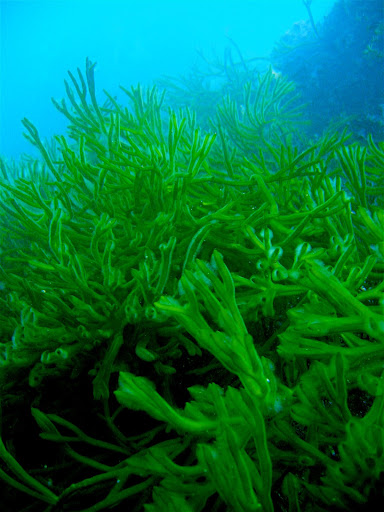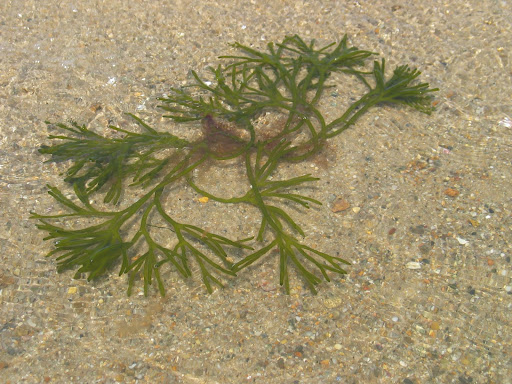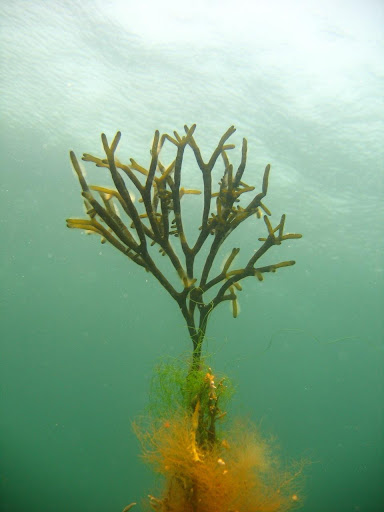Green alga shaped like a small bush, velvety and spongy to the touch. Light to dark green. Branches are thick (3 to 10 mm), spongy, Y-shaped, cylindrical, and without golden yellow blisters seen in native rockweed. Up to 90 cm long. On the beach, branches may dry up white and look like fat spaghetti.
Subtidal areas down to 18 m (60 ft) and tide pools. Often seen drifting in bays. Typically attaches to rocks, reefs, wharves, and even native species of algae, molluscs and crustaceans. Gradually uproots, overtakes and replaces Eelgrass and kelps. Important habitat-forming species for native fish, lobster and shellfish. Attaches to mollusc shells thereby preventing feeding and making them weaker and more prone to predation. Negatively affects and reduces economically important populations of shellfish.
Present in eastern Canada since 1989, pathway not definitively known.

Much branched, velvety, spongy, without golden yellow blisters, looks like white fat spaghetti when dry on the beach.



Can float away after attaching to oysters and other shellfish, hence its common name.
If boating or fishing in Oyster Thief- infested waters, keep your gear clean to avoid accidentally transporting it elsewhere. Avoid transporting water that may contain fragments of Oyster Thief, to prevent the accidental introduction into unaffected or less-affected areas. If you spot this invasive species, report the location to iNaturalist, or directly to the NSISC.
Join our mailing list.